




Wildfire risk is an undeniable part of living in the rural West, but it’s a fight we’re facing head-on.
At Tri-State G&T, we deploy data-driven monitoring and wildfire mitigation strategies to identify and mitigate risk to protect our communities and the critical infrastructure they rely on. We’ll do anything within our power to protect the people and places our members call home.
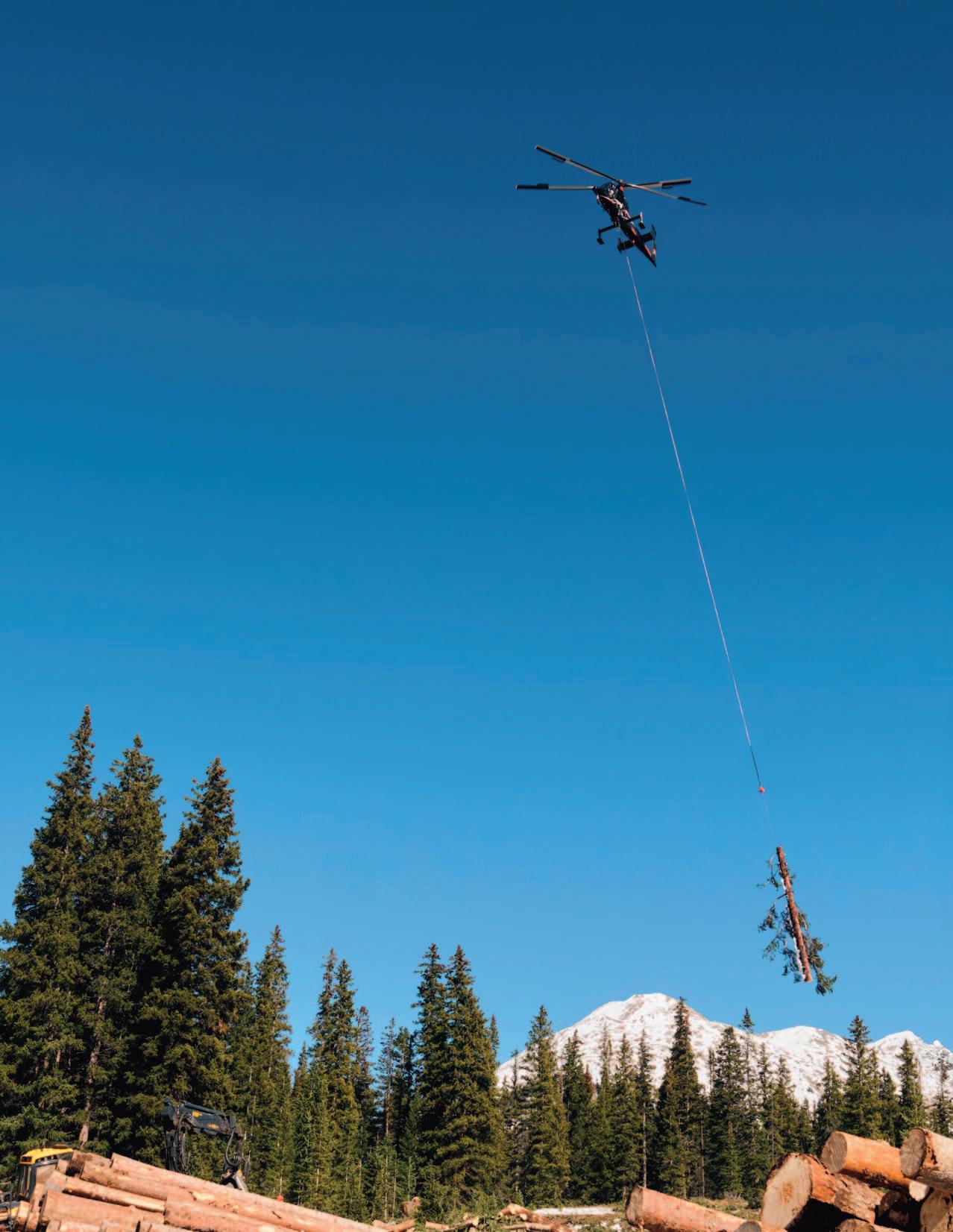
WHATEVER THE FUTURE HOLDS, WE’LL POWER IT.®
Learn more about our year-round wildfire mitigation program here:
Tri-State is a not-for-profit power supplier to cooperatives and public power districts in Colorado, Nebraska, New Mexico and Wyoming.

Staff
General Manager
Rick Nelson
Editor
Wayne Price
Editorial Assistant Tina Schweitzer
President Greg Strehle, Cuming County Public Power District
Vice President/Secretary Vance McCoy Midwest Electric Cooperative Corporation
Treasurer Dan Scheer
Howard Greeley Rural Public Power District
Published monthly by the Nebraska Rural Electric Association, 1244 K Street, Box 82048, Lincoln, Nebraska 68501, (402) 475-4988.
Advertising in the Nebraska Magazine does not imply endorsement for products by the Nebraska Rural Electric Association. Correspondence should be sent to Wayne Price, Editor, Nebraska Magazine, Box 82048, Lincoln, NE 68501.
The Nebraska Magazine is printed by the Aradius Group, 4700 F Street, Omaha, NE 68117. Form 3579 should be sent to Nebraska Magazine, Box 82048, Lincoln, NE 68501.
Periodicals postage paid at Lincoln, Neb.
POSTMASTER: send address changes to Nebraska Magazine, 1244 K Street, Box 82048, Lincoln, NE 68501.
Publication numbers are USPS 071-630 and ISSN 01934937.
Subscriber Services: Cost of subscription for consumers of participating member-systems is $2.14 per year (17.8 cents per month), plus periodicals postage paid from equity accruing to the consumer. For nonmembers, a subscription is $10 per year or $20 for three years, plus local and state tax. Single copy, $2.50.

At Nelson Produce Farms in Valley, Nebraska, families can immerse themselves in a hands-on farm experience that blends agriculture with adventure. What began as a traditional wholesale produce operation has blossomed into a family-friendly destination featuring pick-your-own strawberries and tulips planted in the shape of a hummingbird.
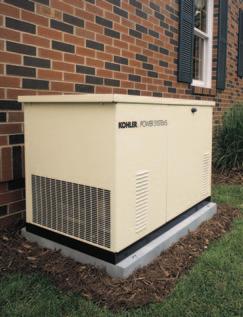
Nebraska’s public power districts and electric cooperatives understand power outages are a major inconvenience, and we do our best to prevent them. That’s why many rural electric utility consumers consider buying backup generators to provide for their family’s needs while waiting for service to resume.
There’s a little touch of Holland at Nelson Produce Farm near Valley, where rows of tulips are backed by a friendly Dutch windmill. See the related article on Page. 6. Photograph by LaRayne Topp

Drive down any street in town or take a back road through the country and you will likely spot a yard sale sign, a basketball hoop, or a birdhouse attached to a utility pole. These items may seem harmless, even helpful. But what most people do not realize is that attaching anything to a utility pole is both illegal and dangerous. It is a safety risk not just for utility workers but also for the general public.
At first glance, a small nail or tack might not look like a problem. But when utility lineworkers climb poles to restore power or perform maintenance, those sharp objects can tear through the rubber gloves and gear they rely on to stay safe. Even a tiny puncture in protective equipment can lead to a deadly encounter with high-voltage electricity.
These utility workers often do their jobs during storms, at night, or in bitter cold. They climb poles in challenging conditions to keep our power flowing. Anything in their way — nails, signs, vines, wire, or metal brackets — becomes a real danger. Every unnecessary object makes the climb harder and more hazardous.
Unfortunately, these attachments are becoming more common. Utility crews in Nebraska have seen poles turned into community bulletin boards, support beams for deer stands and carports, and mounting spots for satellite dishes. This kind of misuse puts lineworkers at serious risk, but it also threatens the safety of anyone who installs the items. People placing these objects often get too close to live wires carrying thousands of volts of electricity. For safety, it is important to keep all personal items and structures at least ten feet away from utility poles.
Visit our website at nebraskamagazine.org

There are also rules in place that prohibit these actions. Utility companies follow national safety guidelines that clearly state poles should not be used for signs, notices, or attachments unless approved by the owner. These rules are in place to protect everyone, not just utility employees. The pole belongs to the electric utility, and it must remain clear of any obstacles to allow for safe and fast repairs.
If something is attached to a pole without permission, utility crews are allowed to remove it. The utility company is not responsible if the item is damaged or destroyed during removal. Their focus is on keeping the pole clear so they can do their job safely and efficiently.
The next time you are tempted to staple a flyer to a pole or mount a basketball hoop for the kids, please think twice. There are safer and more appropriate places to post signs or hang items. Utility poles are meant to support power lines, not public notices or personal projects. Keeping them clear helps protect the people who work hard to keep your lights on — and it helps protect you as well.

On March 19th, a fierce blizzard swept through eastern Nebraska, leaving devastation in its wake. Power lines were snapped, poles broken, and entire stretches of rural territory left in the dark. While customers bundled up and waited for power to be restored, Nebraska’s public power family sprang into action, just like we’ve always done.
At Stanton County Public Power District, we had the honor of sending crews to help our neighbors at Cuming County Public Power District and Burt County Public Power District. These two systems were among a handful that took the brunt of the storm, with significant infrastructure damage and challenging access to the most heavily affected areas. For us, the decision to help was immediate and automatic. That’s what public power does.
Mutual aid isn’t just a policy or an emergency plan on the shelf, it’s a living, working part of who we are. Public power in Nebraska is uniquely structured to put people and service first. That structure allows us to quickly mobilize resources and support one another, especially in times of crisis. We’re not competitors, we’re neighbors serving neighbors.
Trever Turner is the General Manager of Stanton Public Power District headquartered in Stanton, Neb.
In the days that followed the storm, our linemen worked long hours in lessthan-ideal conditions, digging out poles and rebuilding circuits. They labored side by side with crews from other districts, each wearing a different logo on their jackets, but united in one mission: get the lights back on. There’s a deep sense of purpose in this kind of work. It’s not just about restoring electricity; it’s about restoring peace of mind to families, farms, and small-town businesses.
What makes this possible is the cooperative foundation of public power. Unlike investor-owned utilities driven by profit margins or shareholders, our systems are locally governed and community-focused. That allows us to prioritize reliability, safety, and mutual support over competition or costcutting. When a storm hits one district, it hits all of us, and the response reflects that.
I couldn’t be prouder of the way our team stepped up. They left their homes and families to help others, knowing the conditions would be tough and the hours long. Their professionalism, grit, and sense of duty reflect the very best of public power. And while our linemen may not seek recognition, their work deserves to be celebrated.
The March 19th blizzard was a reminder of how vulnerable our infrastructure can be to the forces of nature, but it also showcased the incredible strength of our people and our partnerships. Mutual aid doesn’t just restore power, it restores hope, resilience, and trust in something bigger than any one district. At Stanton County PPD, we’re proud to be part of that tradition.


by LaRayne Topp

Imagine this. You’re a hummingbird, fluttering over the countryside, anxious to alight and extract nectar from a tasty flower, a tulip perhaps. As you hover near Valley, Nebraska, you see an astonishing sight: four acres of brightly-colored tulips, the rows planted in the shape of, well, yourself.
If you’re this light-hearted hummingbird, you have now landed at Nelson Produce Farms with blooms planted in swirling rows to outline a giant hummingbird. Later in the year, you’ll see bright red strawberries; yellow ears of corn; dark green watermelons, all waiting to be cracked open and sampled; and sunflowers, bowing to the day’s sun. Interspersed between the plants and garden patches are all sorts of things for humans to spend their time, from the petting zoo, barrel train rides and a giant hay pyramid for the kids to a Front Porch Café, Indoor Market and outdoor games—like corn hole, of course.
Nelson Produce Farms, under the ownership of Tyler and Pamela Nelson, had its beginnings in 2006 as A&T Farms. The wholesale produce operation has and continues to supply Omaha and the surrounding area with farm fresh vegetables and fruits: onions and potatoes, various kinds of peppers, squash, tomatoes and melons, along with green beans, cucumbers, sweet corn, pumpkins, strawberries, peaches and other fruits.
Theirs has been a business strategy copied from Tyler’s grandparents, the late Larry and Norma Heldt of Yutan.

Today, the Nelsons plus their four daughters, market products raised on more than 400 acres, at local grocery stores and roadside stands. However, the millions of watermelons they raise each year on 200 acres are trucked across the country.
But it all hasn’t been peaches and cream for A&T Farms. Struggling with the worrisome effects of adverse weather and disease that wiped out their 2018 cucumber crop, the Nelsons looked at various business options. And they adapted. The result was Nelson Produce Farms, established on land located right across the road, an agricultural showcase.
Nelson Produce Farms not only gives its visitors a chance to enjoy the look of a farm, it also gives them a

variety of experiences, ones that many visitors may have enjoyed as youngsters. Things like sampling strawberries freshly picked from the vine, reaching out a handful of hay to feed a farm animal, digging ones’ toes into the cool recesses of a pile of corn, or listening to the friendly putt-putt sound of a two-cylinder John Deere tractor.
“As first-generation farmers,” the Nelsons say, “we are dedicated to bridging the gap between rural and urban Nebraska, sharing our love for agriculture, and creating lasting memories for visitors of all ages.”
They do that through festivals, attracting customers seasonally, from early spring through summer. The first
Continued on Page 8
Opposite lower:Taking photographs among the blooms are Bala Biswa from the Kingdom of Bhutan, and Azita Gazmer and Evelyn Biswa from Siliguri, India.
Above: An amazing 400,000 tulips bloom during the spring Tulip Festival.
Left: A number of park benches provide seating throughout the gardens. Visiting on one of them, with a some of the Farm’s 400,000 tulips as a backdrop are, from the left, LaVonne Johnson of Wisner, Janice Nellor and Cheryl Johnson, both of Beemer.
of the year is the Tulip Festival. Although it’s new to Nelson Produce Farms, just as surely as a hummingbird is drawn to nectar, it has attracted as many as 4,000 visitors a day. Its 400,000 tulips, yes, that’s correct, were planted in the fall of 2024, largely by hand. The 39 tulip varieties, from Ad Rem and Adeldoorn to White Valley and World Peace, were planted in distinct sections, its varieties indicated on a map given to visitors. Planted in the center is a wooden Dutch windmill.
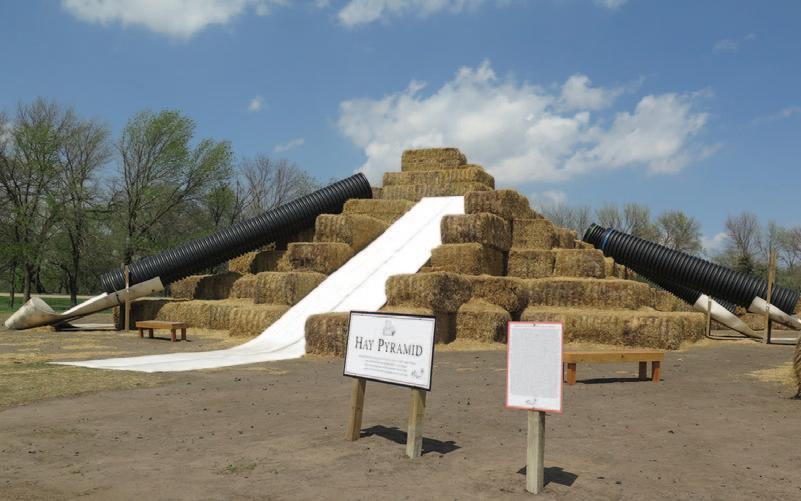
LaVonne Johnson of Wisner, Nebraska, noticed the similarity immediately between the carefully manicured rows of tulip blossoms to a visit to Holland. She spent the day visiting the garden with friends. They were ferried around the Farm by Andrew Miskey, one of more than 110 part-time employees who assist with customers, keep grounds tidy, manage the gift shop, and add plants to the you-pick-it spots of flowers, strawberries, tomatoes, fresh lettuce, herbs and more.
Farm Camps for kids take place in June, giving youngsters a chance to explore nature. They garner handson farm life experiences along with lasting memories while harvesting produce, feeding animals in the petting zoo, enjoying hayrack rides, crafting and playing farm games.
Also in June is Nelson Produce Farm’s annual Strawberry Festival designed for all ages, with strawberry-themed crafts and games, treats and drinks.
On June 27 of 2025, a patriotic celebration of summer and the spirit
Large bales of hay form this gigantic hay pyramid and slide for young and old alike.
of freedom will be topped off with a fireworks display.
Corn—a Nebraska staple in the Cornhusker State—is celebrated in the month of July, with cornthemed games and activities, and of course, corn-inspired food.
Six varieties of watermelon are featured from July through August at Nelson Produce Farms, known to be one of the largest watermelon farms in the Midwest. Along with watermelon slushies and watermelon-eating contests, watermelon skiing is also a “thing” which Festival goers can enjoy.
For two weeks in late summer/early fall, sunflowers are in bloom at Nelson Produce Farmers. Corresponding with the change of seasons, the three-week long Sunflower Festival is the largest of the Farm’s festivals. With more than 300,000 sunflowers in 15 unique varieties, the corresponding Sunflower maze plus butterfly release ceremony offers something
for everyone. In addition, a Rise and Bloom sunrise session is a limited ticket event.
Later in the fall, antique tractors are on display at September’s Tractor Days. Rides on farm machinery are offered, as well as a kiddie tractor pulling contest and tractor parade. Homemade ice cream is churned by a vintage John Deere tractor. Those are all outdoor activities. The Nelson Produce Indoor Market also offers a variety of farm fresh produce indoors, plus a place to enjoy lunch, a cup of gourmet coffee or a sweet treat. Nelson Farms peach cider and Blood Mary drink mix, candles in scents of Strawberry Fields and Fresh Lilac, pickles and olives, preserves and butters, salsa and applesauce all can be found there, and even Nelson Produce Farms t-shirts and farm-raised beef.
To learn more, check out the website Nelsonproducefarm.com, or stop by at 10505 N 234 Street, Valley, Nebraska.



















Minimum order of 5 coins
American Gold Reserve is releasing Government issued $5 Gold American Eagles completely free of dealer mark-up for only $369 each. These beautiful $5 Gold American Eagles are a perfect way to enter the gold market. They are set for immediate public release and will sell out fast GENERATIONAL WEALTH is of paramount significance as it represents a beacon of financial stability. It serves as
generations can build their dreams and aspirations.

• Free of dealer markup. • Protection against inflation and deflation. • Gold offers financial cover during geopolitical uncertainty. • Good portfolio diversifier.


by Maria Kavensky
Whether it’s severe w as soon as an outa electric cooperative to new and more adv power outages faste
Ever wonder what goes into restoring your p of losing electricity can be frustrating, but p cooperatives are always looking for ways to and safely as possible.
weather like a tornado or blizzard, or a fallen tree, age is detected, your public power district or is working to correct the problem. And thanks vanced technologies, electric utilities can restore er than ever.
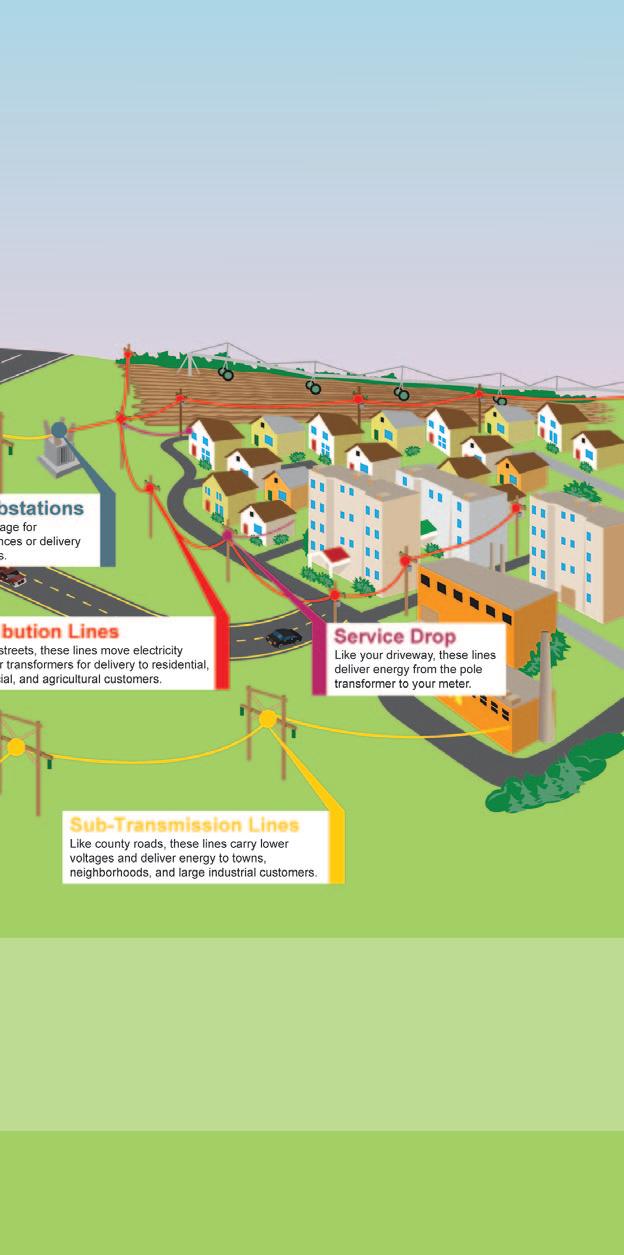
power after an outage? The ordeal public power districts and electric o get the power back on as soon
Powering up after an outage starts on a larger level and ends up in local areas. First, high-voltage transmission lines are examined, then distribution stations, then main distribution lines. If the outage can not be pinpointed to these areas, tap lines and individual homes are inspected. This process allows your utility to efficiently help the most members in the shortest amount of time, and they are working to make this process move even faster.
One of the biggest advancements in technology that electric utilities are using is Advanced Metering Infrastructure (AMI). These smart meters allow for two-way communications and work by sending information back to the electric utility’s operations center. This helps to distinguish between events that affect a single home or multiple outages, which is important because solving either issue is a very different process. The two-way communication also provides a way to verify that power has been restored after an outage.
Another technology is the Outage Management System (OMS), which can predict the location of the issue and how many consumers are impacted. Especially when used with the AMI system, the OMS can be extremely useful for a utility’s effectiveness in resolving an outage. As the AMI collects and sends data, the OMS then analyzes the data using mathematical functions and models the electrical network to assess the impact of the outage.
One technology is even capable of predicting outages before they happen. Distribution Fault Anticipation (DFA) technology was developed by researchers at Texas A&M University and is used by Pedernales Electric Cooperative in Texas. This system can detect tree branches hanging on power lines, damaged equipment and unusual, unrecognized events. By identifying these issues, the electric utility can more efficiently dispatch crews, avoid wildfires and prevent outages before they happen.
One of the major benefits from improved technologies, especially for outages caused by extreme weather, is understanding where the outages are located, which helps to reduce risk for crews out on the road during the weather events.
These technologies clearly benefit public power districts and electric co-ops and the consumers they serve. Power outages are inevitable, but as technology continues to improve, disruptions are becoming shorter and easier to resolve.
You have likely heard the phrase “Look Up & Live” from your local electric utility—and for good reason. It is more than just a catchy safety slogan. On farms across the country, where massive equipment, metal machinery, and towering grain bins are part of everyday life, those three words could save your life.
Whether you are planning a new grain bin installation or simply going about your seasonal harvest, one hazard that is easy to overlook—but incredibly dangerous—is the proximity of overhead power lines. Grain bins, by their very nature, are tall structures. Add in the use of augers, conveyors, and other large metal equipment, and you have got a recipe for potential disaster if you are not careful. One accidental contact with a high-voltage line can be fatal. That is why the National Electrical Safety Code (NESC) lays out specific requirements for how close grain bins can be to overhead power lines—and they are not just recommendations; they are rules designed to save lives.
Thinking of building a new bin or remodeling near an existing one? Do not make a move until you talk to your local public power district or electric cooperative. They will help you understand code compliance, and more importantly, help you avoid costly—and dangerous— mistakes.

Here is what the code requires:
• 18 feet of vertical clearance from the top of the grain bin’s filling port to the nearest high-voltage power line.
• 55 feet of horizontal distance from the bin wall to the power line.
To put that into perspective, if your grain bin stands 25 feet high, it needs to be placed at least 80 feet away from the nearest power line.
And here is something else to keep in mind: Landscaping or drainage changes—even a few feet—can affect those clearances. So make a habit of checking distances regularly.
Even if your grain bin is properly placed, the equipment you use around it poses risks. Portable augers, elevators, and conveyors can
come dangerously close to overhead lines. So can taller implements like scaffolds, hoppers, or irrigation rigs.
The golden rule? Always maintain at least a 10-foot distance from power lines when moving or operating any equipment. And never assume the lines are insulated—they are not.
Farm work is demanding. You are focused on yield, timing, weather, and machinery. But safety must always come first. It takes just one misstep or moment of distraction for a routine task to turn tragic.
So the next time you are out in the field or near your bin site, remember to Look Up & Live.
Are you struggling to keep the second story of your home cool on these sizzling summer days? As heat and hot air rises, so does the temperature in your upper level. Keeping it cool can be a challenge, even if you have an air conditioner. The key is to limit heat gain and to keep the air circulating.
These steps can help cool down your upper floor, as well as keep your entire home cool through the end of the season. No sweat!
• Keep blinds and drapes closed. Close blinds or curtains when the sun is shining to reduce solar heat. Remember that light colored window coverings are most effective at blocking heat energy from the sun. Consider investing in thermal blocking drapes or insulated shades to keep your rooms cool and reduce demand on your air conditioning (AC) system.
• Limit heat being created upstairs. Devices such as computers and hair dryers emit hot air. Use them downstairs to help reduce heat upstairs.
• Use ceiling fans. Ceiling fans make you feel cool by circulating air and providing a cooling sensation on your skin. Be sure to set ceiling fans to rotate
counterclockwise in the summer to push cool air downwards and turn them off when you leave to conserve energy.
• Adjust the dampers. Control airflow by adjusting dampers up and down to restrict or increase airflow. If the second floor is warmer in the summer months, keep dampers on second-floor vents fully open, and only partially open the vents on the first floor to force more cool air to the second floor.
• Check for air leaks. EnergyStar.gov estimates that between 25% and 40% of the money spent on cooling and heating homes is lost due to air leakage problems. Identify air leaks in your home and use caulking, weatherstripping and insulation to seal the gaps.
• Turn the fan from auto to on. Use "on" instead of "auto" to keep your thermostat fan on and maintain air circulation throughout the home. This allows the entire house to stay cool, whether or not the air conditioner is running.
• Check your air filters. Regularly change your air filters to optimize airflow — dirty filters decrease air movement.
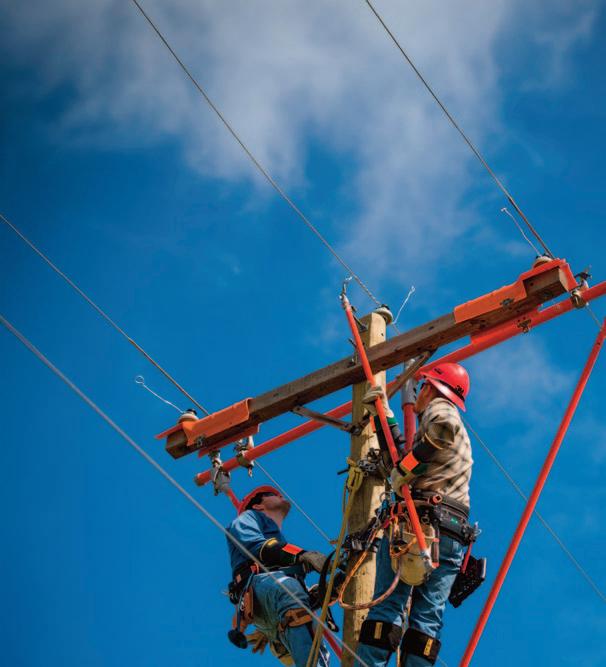
Don’t generate problems with your backup generator
The wind howls outside your windows as a major storm system blows through the area in the late evening. Your lights flicker for a moment or two before you’re plunged into darkness. The social media feed on your phone is packed with reports of damage and power outages, and the storm shows no sign of letting up for hours.
Fortunately, you had the foresight to buy a backup generator big enough to handle your refrigerator, freezer and other key needs. Flashlight in hand, you attach extension cords. Within minutes, you hear the quiet humming that tells you they’re working again.
Nebraska’s public power districts and electric cooperatives understand power outages are a major inconvenience, and we do our best to prevent them. But when severe weather rolls through, outages can sometimes stretch into several hours or even days after a major storm. Lineworkers may have to check many miles of power lines to pinpoint the problems before they can begin their work to restore service. That’s why many rural electric utility consumers consider buying backup generators to provide for their family’s needs while waiting for service to resume.
Backup generators fall into one of two categories. Standby generators are permanently wired into the home’s electrical system by a qualified electrician. They come in a variety of sizes, so homeowners can match the generator to their home’s power needs. Portable generators, as the name implies, can be moved to wherever they are needed. Because they’re small enough to move, they generally provide less power than standby models. Most use

gasoline or diesel fuel, and when they’re operated correctly, both types provide a safe source of backup power.
Some homeowners make the mistake of plugging their backup generators directly into a wall outlet or connect them to their home’s electrical panel. Beyond the significant risk of electrocution and fire that can create, plugging generators directly into your outlets can send the voltage your generator creates into the power lines connecting your home to the electric grid. That creates a dangerous condition called “backfeed,” which can seriously injure the lineworkers who are working so hard to restore your electricity, as well as anyone who accidentally comes in contact with power lines. Backfeed can also damage the generator.
That’s why permanently installed backup generators are required to have what’s known as a transfer switch, which should be installed by a qualified electrician. The transfer switch creates a barrier between your home’s electrical system and the outside wires, so backfeed cannot occur. When the transfer switch senses that power has been
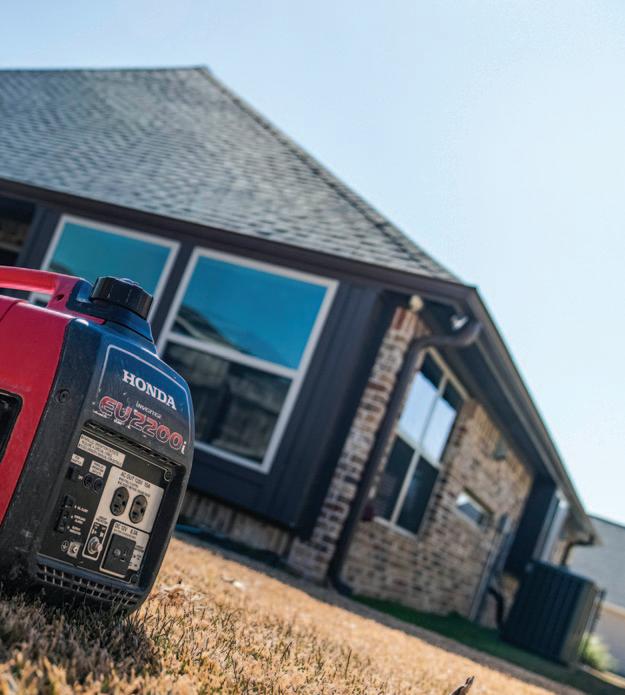
restored, it switches the power from the generator back to the outside lines.
The biggest danger associated with backup generators is one that’s both invisible and deadly. Because backup generators burn fossil fuels, they generate a variety of gases, most notably carbon monoxide. According to the Consumer Product Safety Commission, one portable generator can produce as much CO as hundreds of cars. The agency reports that nearly 100 Americans lose their lives each year because of CO poisoning from backup generators. That’s why generators should only be used in dry, well-ventilated areas away from your home and garage.
CO gas is not only invisible, but it’s also odorless. The National Institutes of Health warns that CO has the potential to kill in as little as five minutes. People exposed to CO typically become dizzy, feel nauseated and experience headaches. Often, they lose consciousness before noticing any symptoms. Anyone exposed to CO should be moved to fresh air immediately.
If you purchase a portable backup generator, protect
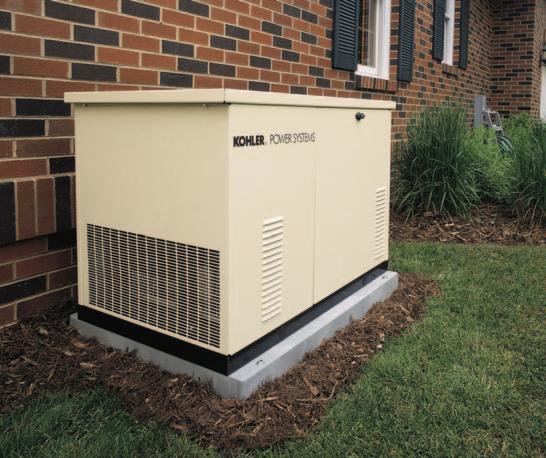
Left: If you purchase a portable backup generator, protect your home and family by taking the time to read the manufacturer’s instructions. Photograph by Honda Above: Standby generators are permanently wired into the home’s electrical system by a qualified electrician. Photograph by Kohler
your home and family by taking the time to read the manufacturer’s instructions. Don’t use portable generators in rainy or wet conditions unless you keep them shielded from moisture and well-ventilated.
When starting a portable generator, make sure nothing is plugged into it. In addition, you can reduce the potential for damage to your appliances and lighting by turning them off or unplugging them from the wall. After the generator starts, plug them in and turn them on one at a time to make sure you aren’t overloading your generator’s capacity. Unplug them from the generator before turning it off. Unless the manufacturer recommends otherwise, always turn the generator off and allow it to cool before adding fuel.
Finally, as with many home appliances, regular maintenance is the key to ensuring your portable generator operates safely for years to come. When storing it, drain the fuel from the tank. In addition, check the oil and fuel level, filters and other components once a season so you know it will be ready to run safely and efficiently the next time a big storm blows through.
Taking a much-needed vacation is exciting, but before you head out, let's talk about some simple steps to prepare your home. A little foresight can lead to significant savings and peace of mind. Beyond stopping your mail, these tips will put a little extra "green" back in your pocket for those souvenir t-shirts!
Imagine coming home to a lower energy bill! It's entirely possible with these adjustments:
Hot Water Heater: If you have a natural gas water heater, simply switch it to "low" or "vacation" mode. For electric models, you can turn it down, or for maximum savings, flip it off at the circuit breaker panel. Why heat water you are not using?
Thermostat Tune-Up: Resist the urge to completely shut off your AC. Instead, set your thermostat to a higher temperature, ideally between 80 to 85 degrees Fahrenheit. This protects your wood floors and furniture from excessive heat and humidity while keeping pets comfortable, all without running your AC unnecessarily. Your air will still circulate, preventing that stuffy feeling upon your return.
Unplug "Vampire" Electronics: Those small appliances and electronic devices, even when off, can draw power. This is known as "phantom load" or "vampire drain."
Unplug gaming systems, coffee makers, toasters, and especially phone chargers. This is not just a vacation tip; make it a habit when you are home too! Chargers can overheat if left plugged in without a device, and unplugging them after your electronics are fully charged saves energy.
Water damage can be a nightmare. Here are some quick steps to prevent potential issues:
Turn off the water valves to your dishwasher, washing machine, and all sinks. For even greater peace of mind, consider shutting off the main water valve to your house. Don't worry, this typically won't affect an outdoor sprinkler system if you have one.
This might seem obvious, but it's worth a reminder: clean out your refrigerator before you leave. No one wants to come home to a science experiment in the vegetable drawer.
By taking these few simple steps, you will not only enhance your home's security but also significantly reduce your energy consumption and utility bills while you are away. Enjoy your vacation knowing your home is running efficiently and safely!




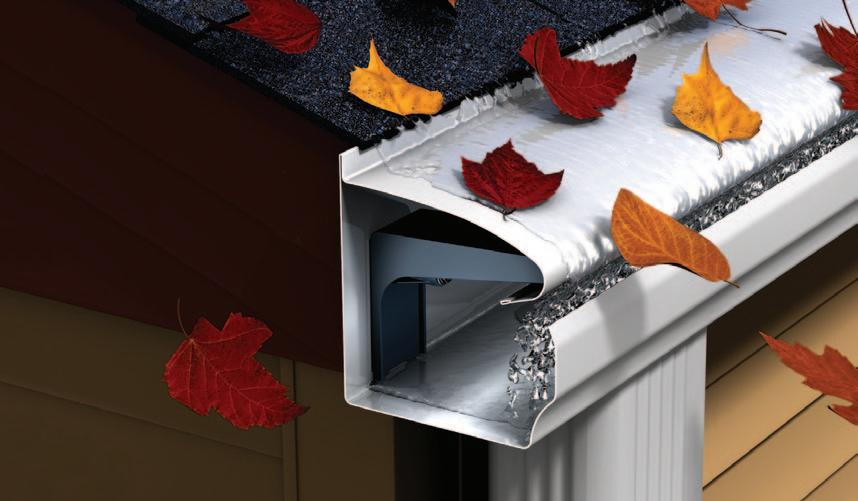










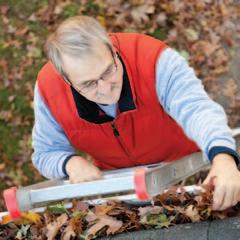

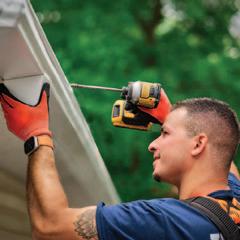













by Miranda Boutelle
I love old homes. The details and craftsmanship have always drawn me to them. The features of older homes can make them less efficient than modern construction, but it doesn’t have to be that way. You can keep the charm and make your home more efficient.
Start by prioritizing the invisible upgrades that make your home more comfortable and efficient. When we were kids, I don’t think any of us thought, “When I grow up, I want to spend my hard-earned money on insulation.” It’s not as exciting as new countertops or a remodeled bathroom, but air sealing and insulation can save you money every month. Then you can apply the savings to aesthetic improvements.
in the floor framing and insulate attic spaces.
Dense-packed cellulose or closed cell foam insulation can be sprayed into exterior walls. Skilled contractors can remove pieces of siding and drill holes to fill the wall cavities from the outside of the home. For brick or stone homes, holes can be drilled from the inside and then patched and painted. Insulating walls from the inside of the home requires more time and effort in preparation and cleanup, but having well-insulated walls is worth it.
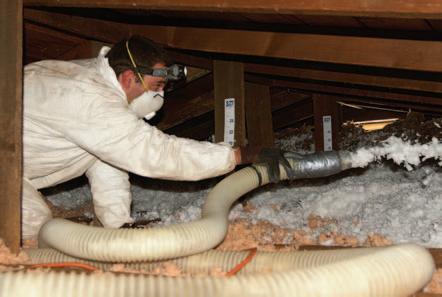
Knob and tube wiring— commonly used form the early 1880s to the 1930s with no grounding wire—should be replaced prior to insulating walls and attics for safety purposes. Contact between insulation and knob and tube wiring can create a fire hazard.
Many older homes are not properly insulated. Insulation has several benefits beyond sealing your home and keeping outdoor air from seeping in. It reduces outdoor noise, makes your home quieter and improves your overall comfort.
Always properly air seal before you insulate. Older homes with pocket doors, coved ceilings, dumbwaiters, doors to attic spaces and laundry chutes allow indoor air to escape through the cavities, gaps and cracks around these classic features. Sealing off open cavities around those features often requires plywood, rigid foam or drywall fastened into place and then caulked around the edges.
Keep an eye out for framing features that cause drafts. Balloon framing is a type of construction where wall studs run all the way from the foundation to the roof, allowing air to flow freely through those spaces. Second floors with knee wall attics on both sides are notorious for air leakage. Open cavities allow air to flow horizontally between the attic spaces, making the home uncomfortable and inefficient. Seal off the open cavities
People often think new windows are the best way to improve a home’s efficiency. Considering the cost of replacing windows, I recommend investing in air sealing and insulation first. Then consider storm windows to keep the charm of the original windows, such as leaded glass and stained-glass windows in good condition. Choose from interior or exterior options that are operable and inoperable.
Once you have addressed the envelope of your home, consider appliance improvements. Replace your old electric water heater with a heat pump water heater. This upgrade can save a family of four an estimated $550 per year and more than $5,600 over the lifetime of the water heater, according to EnergyStar.
Invest in high-efficiency heating and cooling equipment. A mini-split heat pump, also known as a ductless heat pump, is a more efficient option than electric baseboard heating and provides the benefit of air conditioning.
Older homes do not have to be inefficient. Show your home some love and invest in energy efficient upgrades.
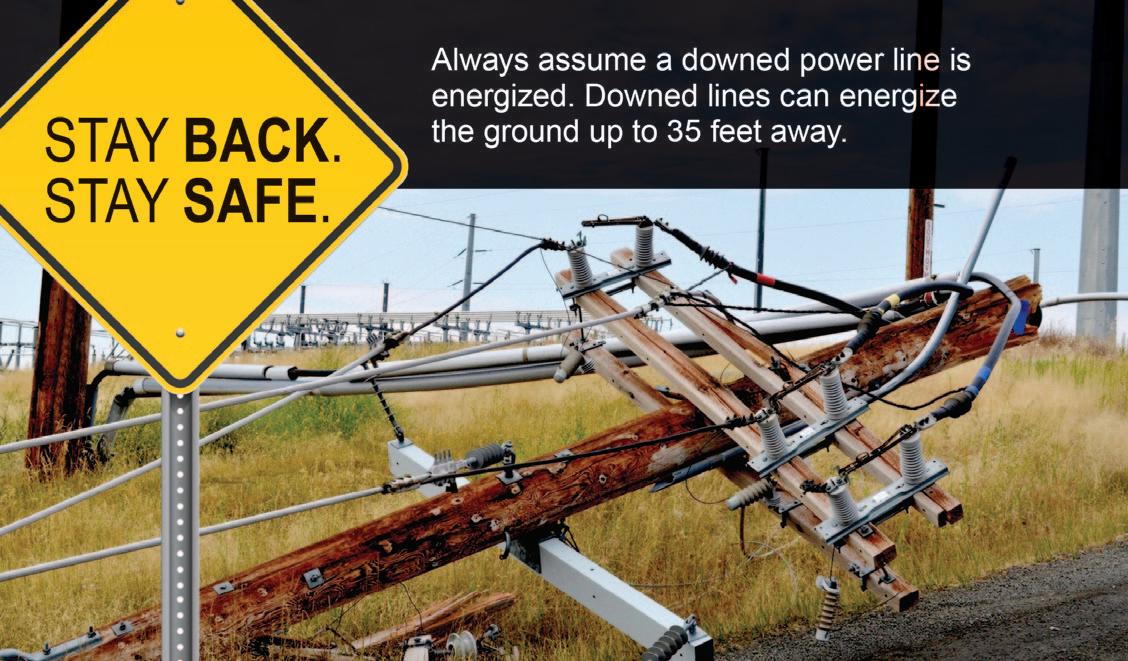

In the town of Howells, Nebraska— population 600—Eighty8 Bar & Grill has quickly become the place where locals gather, celebrate, and fill up on hearty food and conversation. At the center of it all is Brad Hegemann, a hometown native whose journey from Peru State University graduate and teacher to bar owner wasn’t part of a master plan, but it makes perfect sense in hindsight.
Brad spent two decades working in bars while helping out on the family farm just outside of town. When a longtime furniture and flooring store in Howells came up for sale, it felt like a sign. He had worked odd jobs for the family that owned the building, and when they were ready to retire, they offered to sell it to him. He said yes, then gutted the place and rebuilt it nearly from scratch—wiring, HVAC, plumbing, you name it. But he kept the touches that matter. The exposed brick gives the space character, and an old freight elevator in the back hints at the building’s past.
When it came time to name the place, Brad wanted something personal. Born in 1988, the number popped into his head one night, and Eighty8 seem like the right choice. With five employees, many of them family or longtime friends, the bar runs on community spirit. Brad handles the cooking himself, serving up no-frills bar food with generous portions. “It’s basic, but you will not leave hungry,” he says. Burgers are the star—half-pound beef patties stacked high—but the 88 Melt is the standout: a juicy burger on Texas toast with grilled onions, cheese, and Dorothy Lynch dressing. He keeps the menu fresh, rotating new sandwiches and appetizers every few months, while staples like the Reuben and Philly stay put for loyal fans.
Eighty8’s hours change with the seasons, mirroring the rhythms of rural life. Summer
Eighty8 Bar & Grill


brings longer nights and livelier crowds. In winter, Sunday night specials keep people coming back. But no matter the season, the bar feels like home. Locals drop in to chat over lunch to play cards or toast after a wedding. Yes, brides really do dance on the bar.
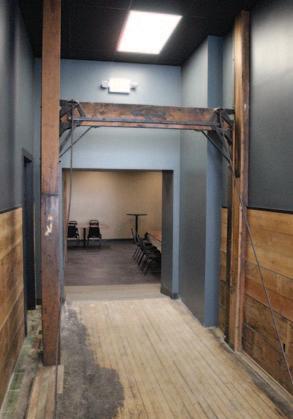
In July, Brad and a family friend will open a café next door, offering breakfast, coffee, and baked goods—another extension of the community-first vibe he’s built. “At the end of the day,” he says, “I care about how people feel when they walk out of here. Did they have a good night? Did they have fun?” In Howells, the answer is almost always yes.

2 cans whole corn, drained
1 cup chopped bell pepper
1/4 cup chopped red onion (optional)
1 hot pepper (optional)
1 cup shredded queso cheese freshly chopped cilantro, for garnish
Dressing:
2 limes, juice only
1/4 cup mayo
1 pinch salt
1 tablespoon sugar
To make dressing: In bowl, mix lime juice, mayo, salt and sugar. In separate large bowl, mix corn; bell pepper; onion, if desired; hot pepper, if desired; and queso cheese. Pour dressing over corn mixture and mix well. Top with cilantro.
We Want Your RECIPES!
Send us your favorite recipes. Be sure to include a mailing address for payment purposes and a phone number in case we need to contact you. Recipes will not be returned and not all recipes will be used.
Mail: Nebraska Rural Electric Association, Nebraska Magazine Recipes, P.O. Box 82048, Lincoln, NE 68501 • E-mail: Tina Schweitzer at tschweitzer@nrea.org.
Bowtie Broccoli Pasta Salad
16 oz. Bowtie pasta, cooked
3 cups fresh broccoli, chopped
3 cups seedless grapes, halved
2 cups mayonnaise
2/3 cup sugar
2/3 cup diced red onion
1 teaspoon salt
1/2 cup sunflower seeds
2/3 cup red wine vinegar
1/4 cup bacon pieces
Whisk together mayonnaise, sugar, onion and vinegar. Combine all other ingredients with mixture.
2 lbs. sirloin steak, cut into small pieces
2 tablespoons oil
4 tablespoons butter
4 teaspoons minced garlic salt and pepper
1 tablespoon minced parsley
Heat oil in skillet over high heat. Season steak with salt and pepper. Cook steak 3 – 4 minutes, stirring often. Add butter and garlic, stir to coat all meat, then cook for 2 -3 minutes. Sprinkle with parsley. It can be eaten with toothpicks or served over rice or mashed potatoes.
Strawberry - Banana Split
6 tablespoons butter or oleo, melted
5 cups Rice Krispies cereal, crushed to 1 2/3 cups
1/4 cup sugar
8 oz cream cheese, softened
1 cup powdered sugar
3 ripe bananas, sliced
1 pint strawberries, sliced
8 oz Cool Whip
1/4 cup chopped nuts
Combine butter and sugar, add crushed cereal. Mix and press into prepared 9” X 13” buttered pan. Bake at 300 degrees for 15 minutes. Cool. Combine cream cheese and sugar, mixing until fluffy. Gently spread over crust. Place banana slices over mixture. Spoon strawberries over bananas and spread Cool Whip over fruit. Sprinkle with nuts.






















More than 80 communities across the state count on Nebraska Public Power District to power their everyday. From preparing them for economic growth to partnering in local events to educating tomorrow’s workforce, our role is more than “keeping the lights on.” We are charged with creating community connections that are just as trusted and reliable as the electricity we provide. And we love what we do.
POWERING OUR STATE. EMPOWERING OUR COMMUNITIES.
Together with your local public power utility


